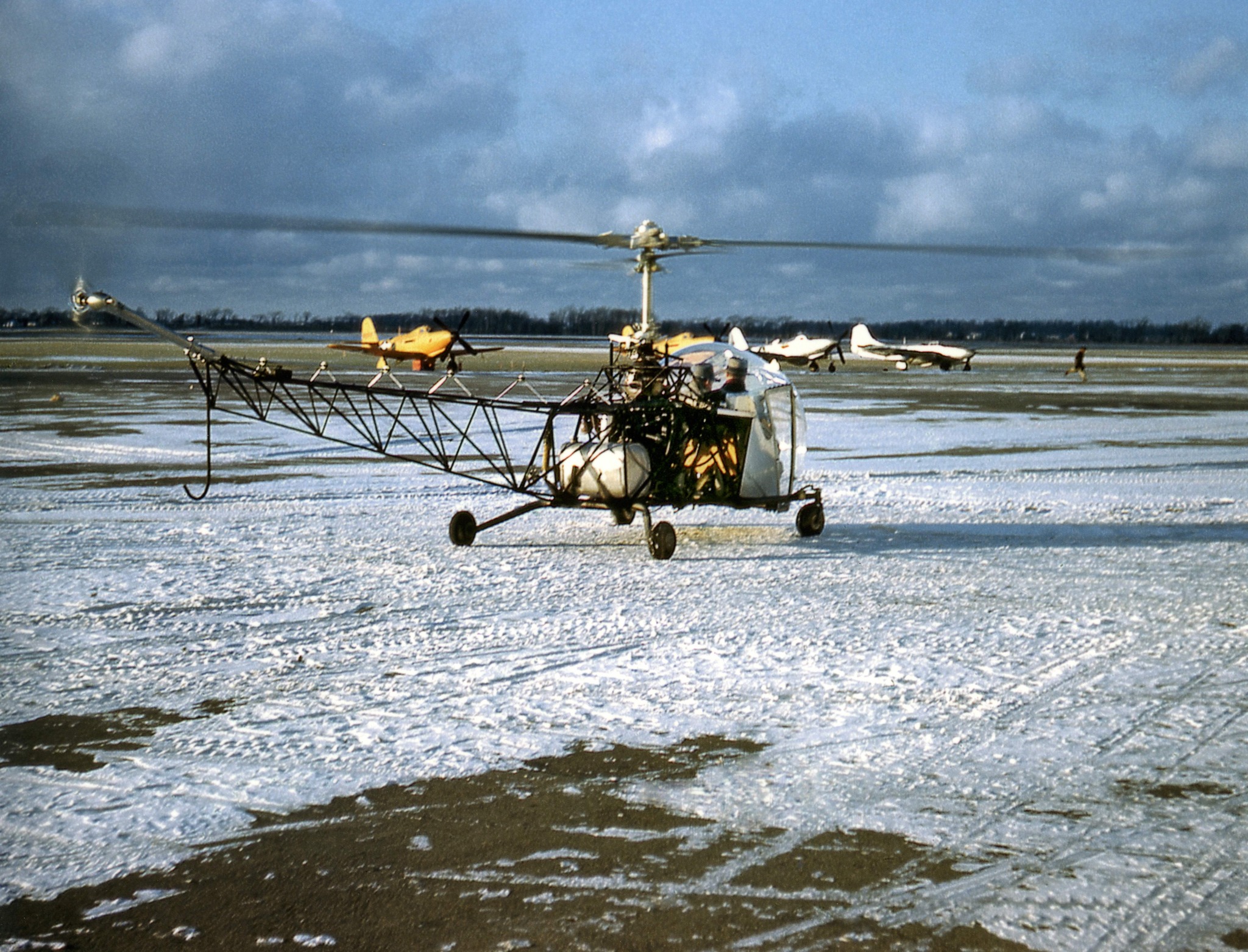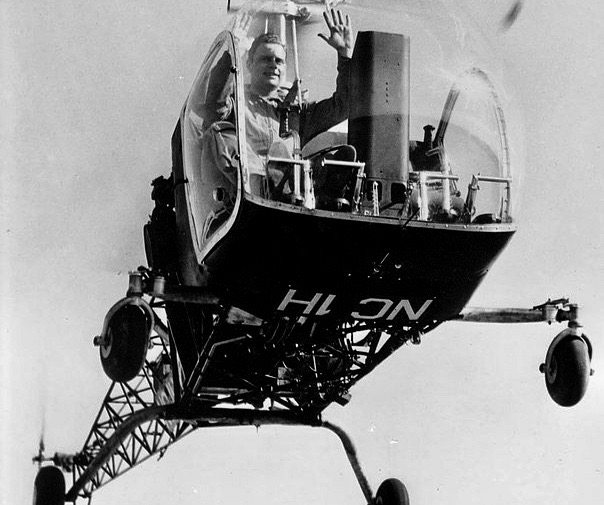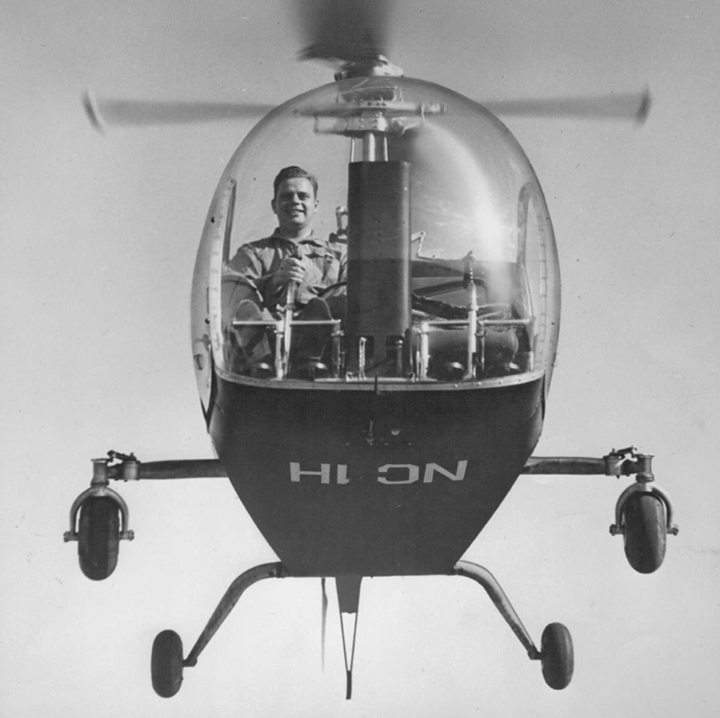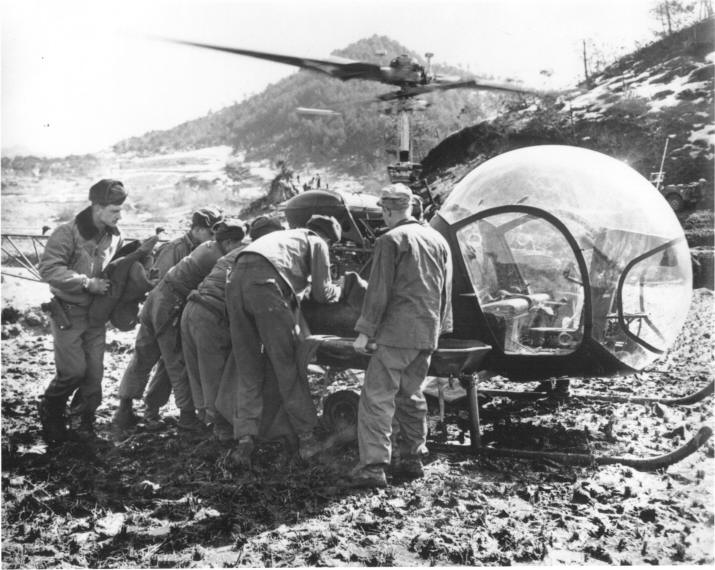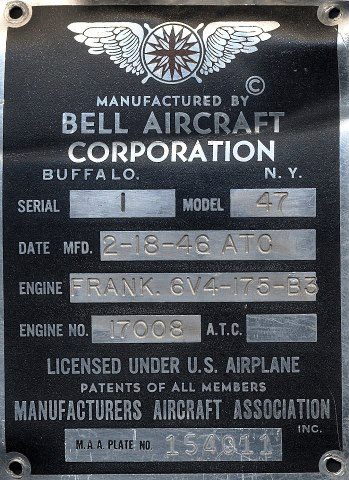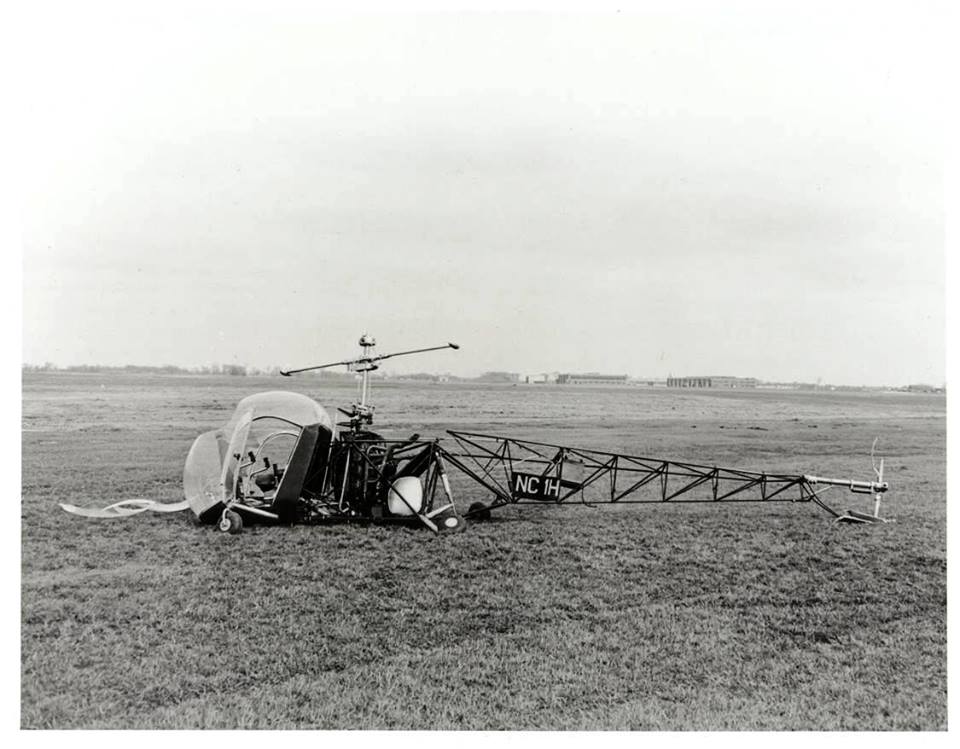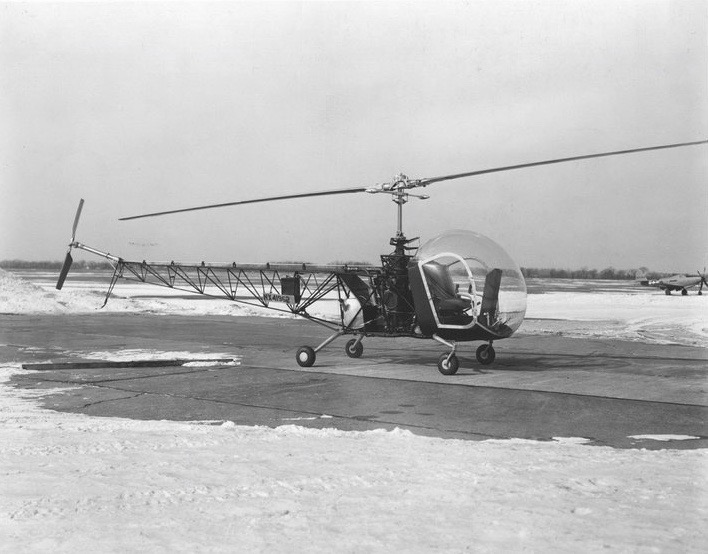
 3 April 1946: The first commercially certified helicopter, Bell Model 47 NC1H, serial number 1, was being flown by two Bell Aircraft Corporation test pilots, Edward F. Hensley and Gerald Arthur (“Jay”) Demming. Hensley was teaching Demming to fly the aircraft.
3 April 1946: The first commercially certified helicopter, Bell Model 47 NC1H, serial number 1, was being flown by two Bell Aircraft Corporation test pilots, Edward F. Hensley and Gerald Arthur (“Jay”) Demming. Hensley was teaching Demming to fly the aircraft.
Demming was hovering the helicopter about 15 feet (4½ meters) above the ground and began to transition to forward flight. Checking the instruments, he noticed that the engine was turning 3,100 r.p.m., the upper limit of its operating range. Intending to reduce the r.p.m., he moved the collective pitch control lever.
When the collective pitch lever is raised (controlled by the helicopter pilot’s left hand), it causes the angle of attack of all main rotor blades to increase, “collectively.” While this increases the amount of lift being produced, it also increases drag, which slows the rotation of both the main rotor and engine. Lowering the collective lever has the opposite effect. Drag is reduced, and the rotor and engine accelerate.
In an early helicopter like the Model 47, the pilot must manually correlate engine r.p.m. with main rotor collective pitch and tail rotor collective pitch. A twist-grip throttle is on the forward end of the collective lever for this purpose. Throttle adjustments are continuous during helicopter flight, as any change in the other controls will effect engine speed.
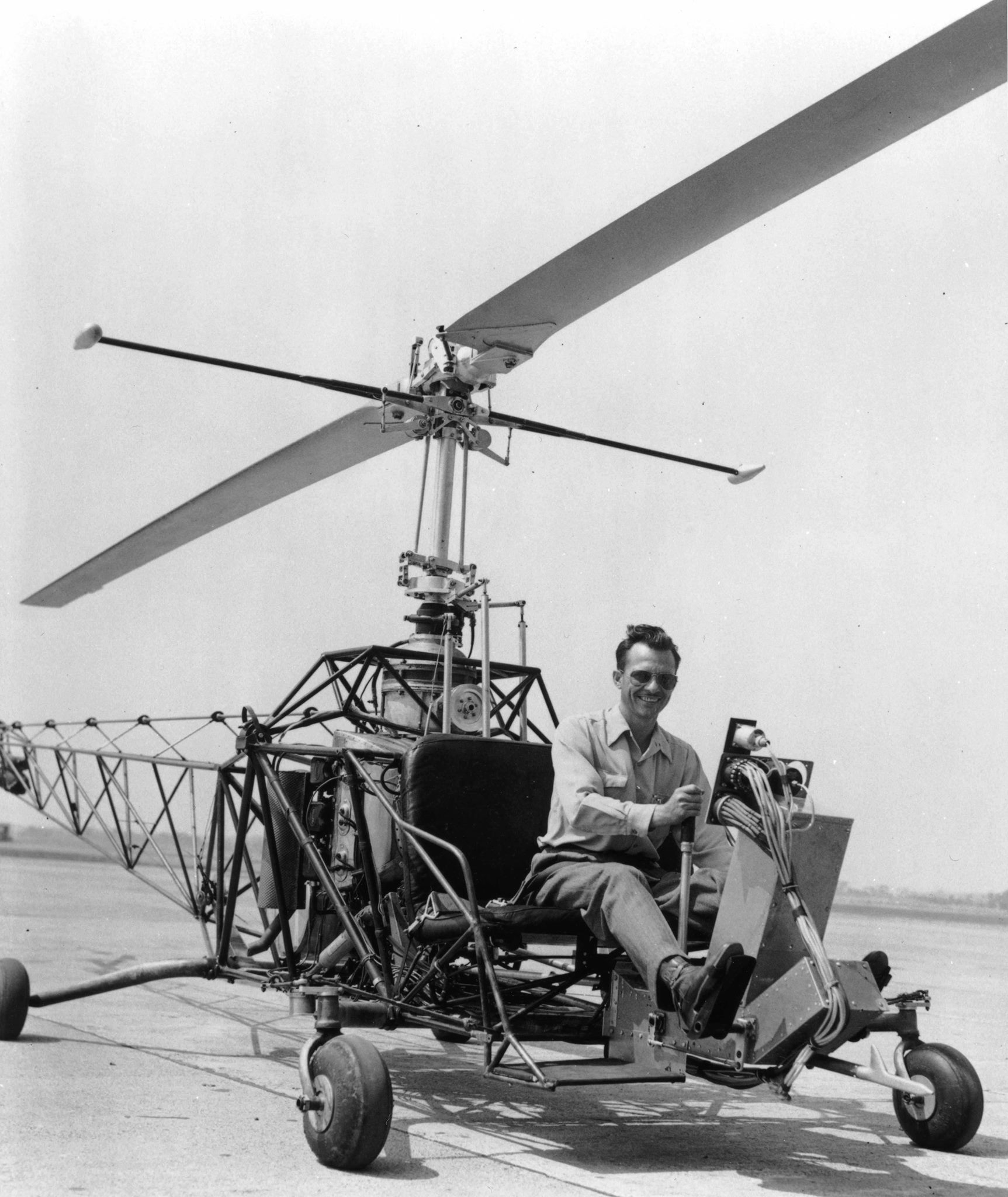
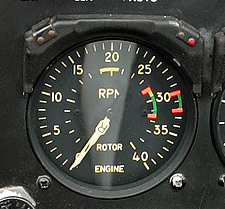
As Demming was new to the helicopter, he had not yet learned to make these power adjustments automatically. Rather than raise the collective to slow the engine r.p.m., he inadvertently lowered it. This caused a sudden decrease in the rotor blades’ angle of attack and a corresponding decrease in drag. The load on the engine was decreased, but the throttle setting was not reduced accordingly. The engine accelerated to 3,400 r.p.m., which would have driven the main rotor to 378 r.p.m., 5% beyond its maximum operating r.p.m. (“red line”).
Recognizing his error, Demming raised the collective to control the engine/rotor r.p.m.
There was a violent shock. NC1H fell to the ground from a height Demming estimated at 30–50 feet (9–15 meters).
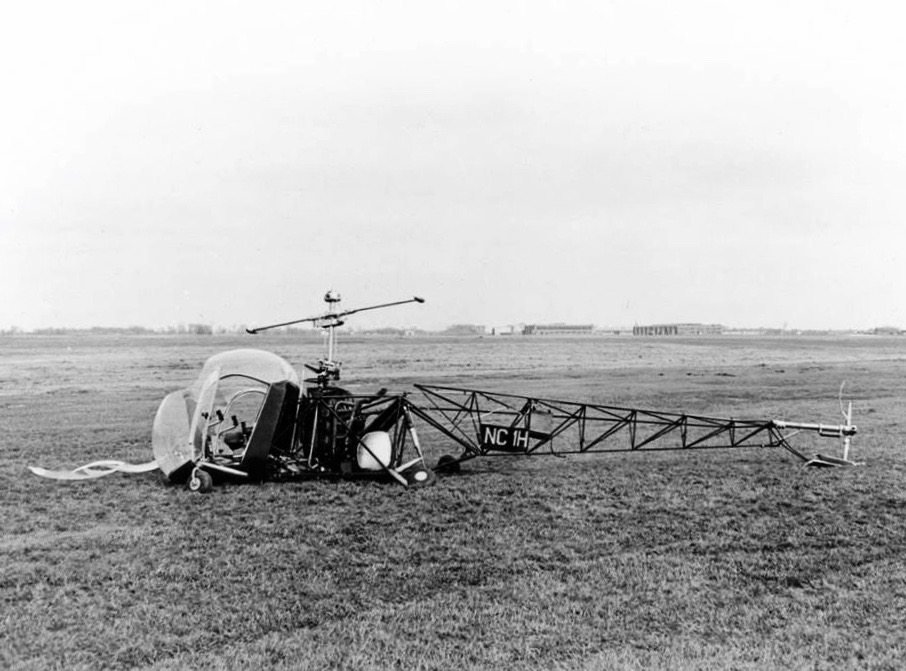
After the impact, both Demming and Hensley were unconscious. Demming soon regained consciousness and got out of the cockpit, while airport fire/rescue personnel looked after Hensley.
Hensley had fractured three vertebra and was initially not expected to survive his injuries, but he did eventually recover.
NC1H, the first civil-certified helicopter, was damaged beyond repair.
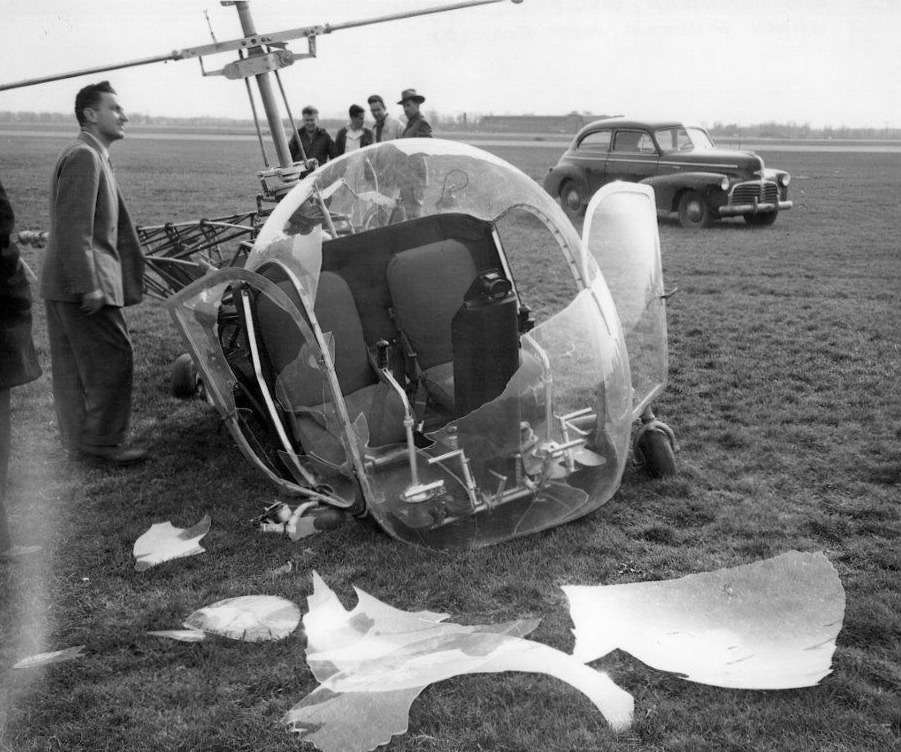
In photographs of the damaged helicopter, the main rotor yoke, blade grips, pitch horns, drag braces and the main rotor blades are nowhere to be seen. The gimbal ring, static stop, main rotor retaining nut and stabilizer bar are still in place. This suggests that the hub failed and the associated parts were thrown outward, away from the axis of rotation.
With nothing to support it in flight, the rest of the helicopter dropped to the ground like a stone from your hand.
NC1H (originally registered NX41962) had first flown on 8 December 1945, and had received the very first civil helicopter Type Certificate, H-1, on 8 March 1946.
At the time of the accident, NC1H had 75 hours, 42 minutes, total time (TTAF). Its engine had accumulated 136 hours, 50 minutes, since being manufactured (TTSN).
After the crash, NC1H’s registration number was reassigned to s/n 11.
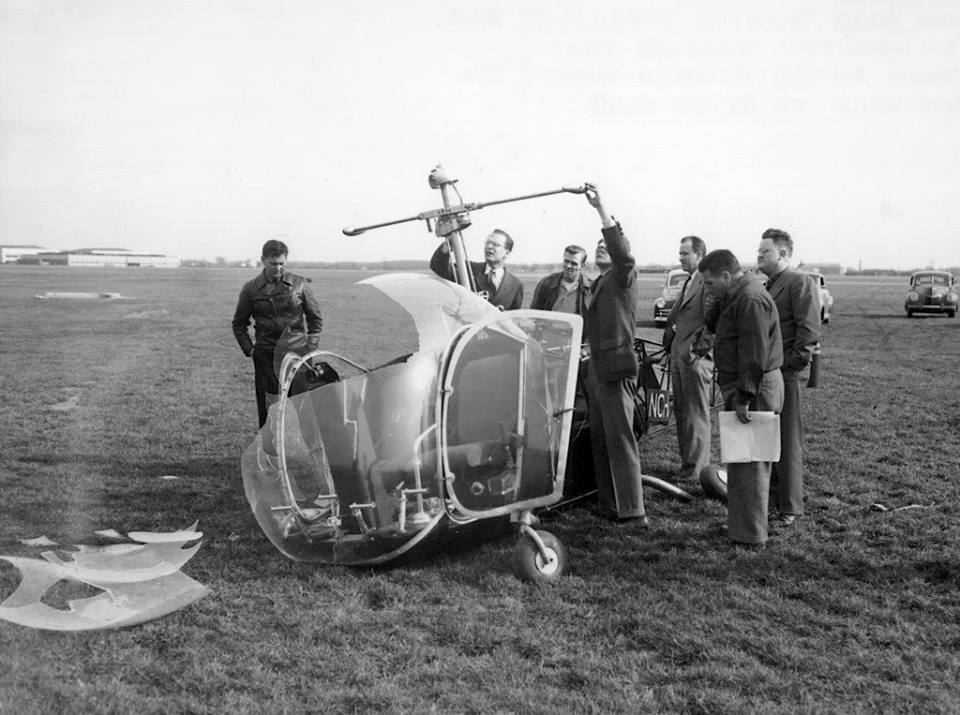
The Bell 47 series was constructed of a welded tubular steel airframe with a sheet metal cockpit and a characteristic plexiglas bubble canopy. In the original configuration, it had a four-point wheeled landing gear, but this was soon replaced with a tubular skid arrangement. It was a two-place aircraft with dual flight controls.
The first Bell Model 47 had an overall length (with rotors turning) of 39 feet, 7½ inches (12.078 meters). The main rotor diameter was 33 feet, 7 inches (10.236 meters). The length of the fuselage, from the front of the canopy to the trailing edge of the tail rotor disc, was 29 feet, 3½ inches (8.928 meters). The helicopter’s height, to the top of the main rotor mast, was 9 feet, 2–7/16 inches (2.805 meters).
NC1H had an empty weight of 1,393 pounds (632 kilograms). Its gross weight was 2,100 pounds (953 kilograms).
The Bell 47’s main rotor is a two-bladed, under-slung, semi-rigid assembly that would be a characteristic of helicopters built by Bell for decades. The blades were constructed of laminated wood. A stabilizer bar was placed below the hub and linked to the flight controls through hydraulic dampers. This made for a very stable aircraft. The main rotor turns counter-clockwise, as seen from above. (The advancing blade is on the right.) Its normal operating range is 322–360 r.p.m. (294–360 r.p.m. in autorotation).
The tail rotor is positioned on the right side of the tail boom in a tractor configuration. It has a diameter of 5 feet, 5 inches (1.676 meters) and rotates counter-clockwise as seen from the helicopter’s left. (The advancing blade is above the axis of rotation.) The tail rotor blades were also made of wood.

The new helicopter had a cruise speed of 75 miles per hour (121 kilometers per hour) and a maximum speed (VNE) of 80 miles per hour (129 kilometers per hour). NC1H had a service ceiling of 11,400 feet (3,475 meters).
The Bell 47 was produced at the plant in New York, and later at Fort Worth, Texas. It was steadily improved and remained in production until 1974. In military service the Model 47 was designated H-13 Sioux, (Army and Air Force), HTL (Navy) and HUG (Coast Guard). The helicopter was also built under license by Agusta, Kawasaki and Westland. More than 7,000 were built worldwide and it is believed that about 10% of those remain in service.
In 2010, the type certificates for all Bell 47 models was transferred to Scott’s Helicopter Service, Le Sueur, Minnesota, which continues to manufacture parts and complete helicopters.
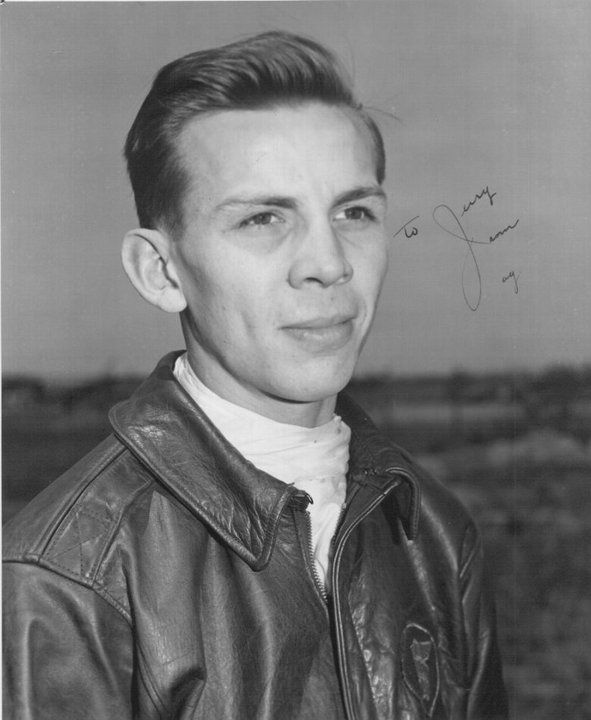
Gerald Arthur (“Jay”) Demming was born 4 July 1918 at Niagara Falls, New York. He was the son of Arthur L. Demming, Jr., a factory foreman, and Marie I. Demming. He attended La Salle High School, graduating in 1936, then the University of Illinois at Urbana Champaign.
While at college, Demming entered the Civilian Pilot Training Program. He became a multi-engine and instrument flight instructor at Dominion Skyways Ltd., a flight school at Malton, Ontario, Canada. He was next employed as a civilian pilot for the Royal Canadian Air Force.
On 30 May 1942, Jay Demming married Miss Audrey Mary Prowse. They would have two children. They divorced im May 1966 in Brevard County, Florida.
Gerald Arthur Demming died 20 May 1996, at Plant City, Hillsborough, Florida.
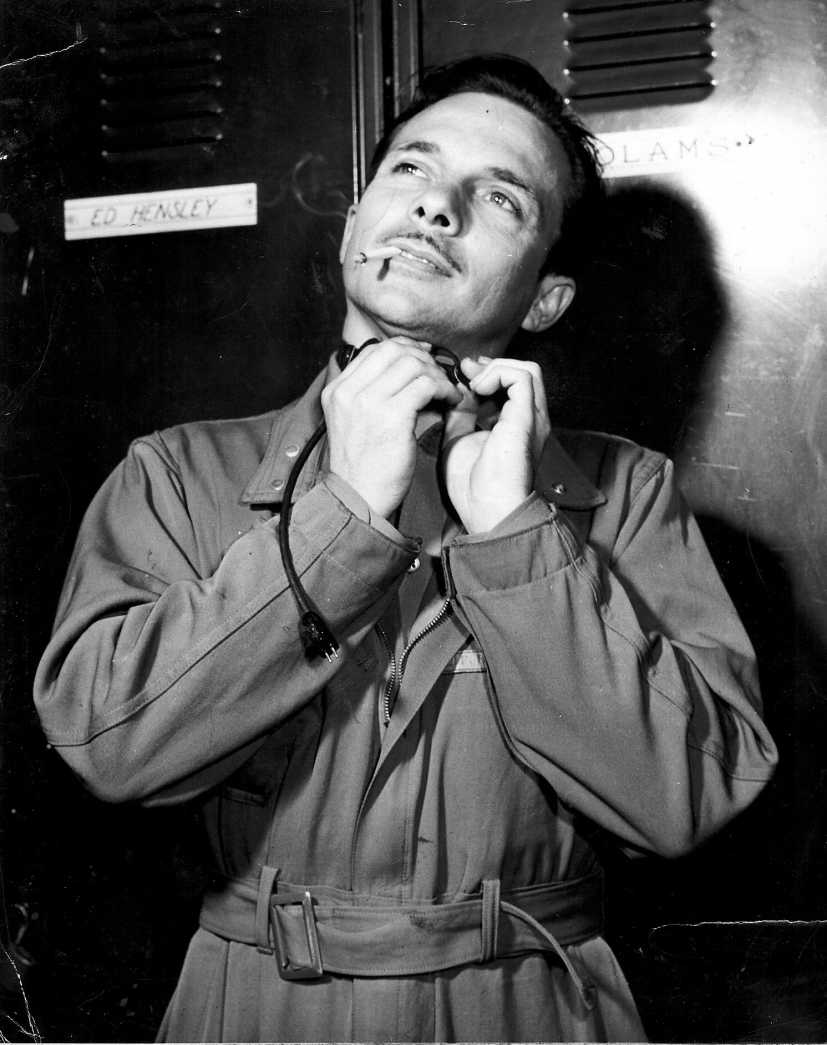
Edward Freeland Hensley was born 22 November 1910 at Mountain Park, Oklahoma. He was the first of three children of Edward Hensley, owner of a real estate company, and Mamie A. Freeland Hensley. He attended John Brown College at Siloam Springs, Arkansas.
Hensley had brown hair and blue eyes. He was 5 feet, 8 inches tall and weighed 135 pounds.
Hensley married Miss Edith Hyla Collins in Oklahoma City, Oklahoma, 15 August 1931. They would have four children.
In th mid-1930s, Hensley worked for the U.S. Postal Service in Oklahoma City. He was a special deliveries manager.
Hensley was issued a commercial pilot’s license in 1938. By 1940, he was a flight instructor at McConnell Flying Service, Parsons, Kansas. He was next employed as a civilian flight instructor for Brayton Flying Services, inc., at the U.S. Army contract flight school in Cuero Municipal Airport, Cuero, Texas. He then joined Bell Aircraft Corporation as a test pilot.
He later was a test pilot for the Boeing B-47 Stratojet at Wichita, Kansas.
Edward Freeland Hensley died in June 1969 in Wichita.
© 2019, Bryan R. Swopes
